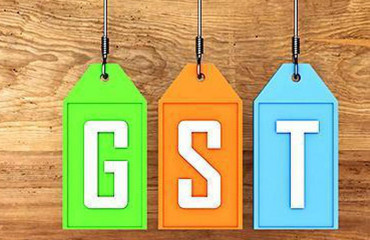
Goods and services tax (GST) collections are buoyant, exceeding ₹2 trillion in the past two months. Mint looks at what they indicate about the state of the economy. Is it time to go ahead with the overdue rationalization of GST rates?
Goods and services tax (GST) collections are buoyant, exceeding ₹2 trillion in the past two months. Mint looks at what they indicate about the state of the economy. Is it time to go ahead with the overdue rationalization of GST rates?
Also Read | Who is liable if a friendly chatbot 'abets' suicide?
How good are the GST collections?
In April, gross GST collection was at a record high of ₹2.36 trillion. It reflected the transactions in the month of March, which, being the last month of the fiscal, saw firms pushing sales to achieve their annual targets. Not many expected similar numbers in May as transactions in April typically suffer from the 'hangover effect' of strong March sales. But the May collection came at ₹2.01 trillion. If one normalized March collection of ₹1.96 trillion, which pertains to a 28-day February, GST revenues have exceeded ₹2 trillion for three straight months. In the six months preceding that, GST collections topped ₹1.75 trillion on average.
Also Read | YouTubers vs ANI: Fair-use in the spotlight
What do the buoyant GST numbers indicate?
GST is the most accurate and broad-based barometer to measure domestic consumption in the economy. GST collections from domestic transactions have been rising. They grew 8.4% in December, 10.7% in April and 13.7% in May—further evidence of the fact that consumption in the economy is improving. Other indicators have suggested that rural demand, which had been subdued since the pandemic, has revived thanks to good monsoons and better crop realizations. Urban demand is also showing signs of revival as lower inflation and tax breaks have left more cash in the hands of people.
What is the near-term outlook?
Experts refrain from hazarding a guess as GST collection depends on how the economy is doing. But recent trends indicate a steady increase. In 2023-24, GST collections typically averaged around ₹1.4 trillion. Last year it was at ₹1.8 trillion levels. Given this, experts do not rule out ₹2 trillion per month as the new normal in the fiscal year 2025-26.
Also Read | Dr AI is here, but will the human touch go away?
The GST on imports is rising, is it a worry?
It is unclear. GST on imports shot up 20.8% in April and 25.2% in May. This indicates a surge in imports. But the nature of imports is unclear—final products meant for domestic consumption or intermediary products for processing and re-export? The government does not share sectoral GST data. With the US imposing high tariffs on China, dumping of Chinese goods is a concern. At the same time, tariffs give India a competitive advantage. Surge in imports could be to meet higher export demand.
Is it time for GST rate rationalization?
Yes. The government has always maintained that the GST Council would initiate the simplification of the GST rate structure once the indirect tax stabilizes. Now that it has, the government should cut down the multiple rates that complicates the tax. Experts see the possibility of two changes. The 12% tariff rate, which accounts for less than 4% of GST revenue, could be ended and the compensation cess, levied on tobacco and auto sales, could end as of March 2026 or continue under a new name such as health cess or a green cess.
